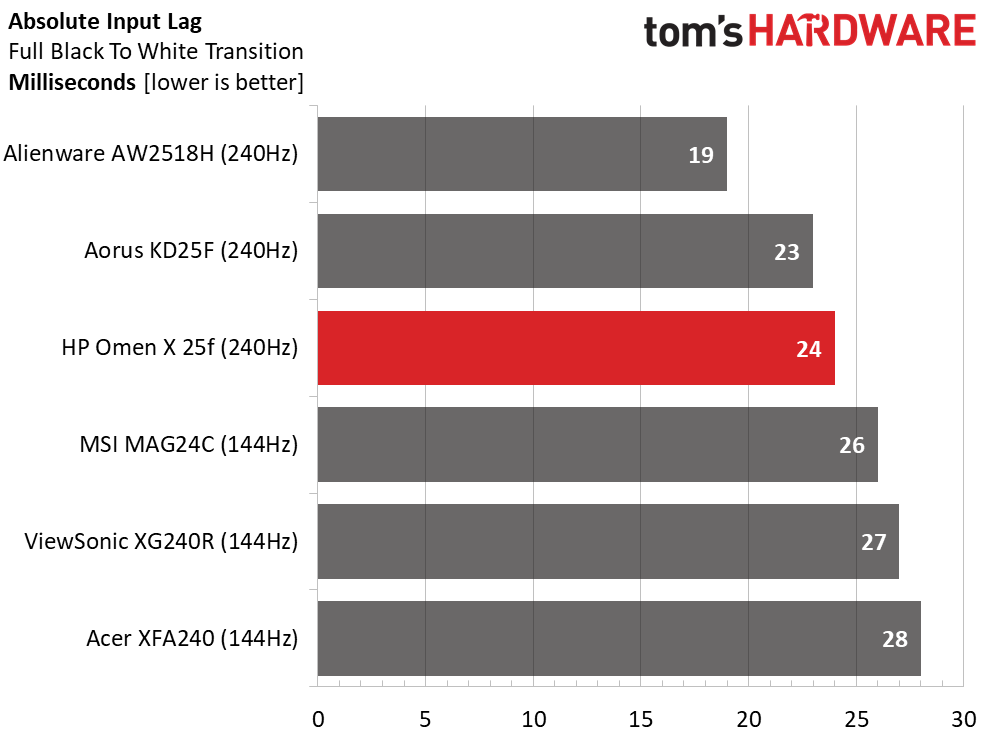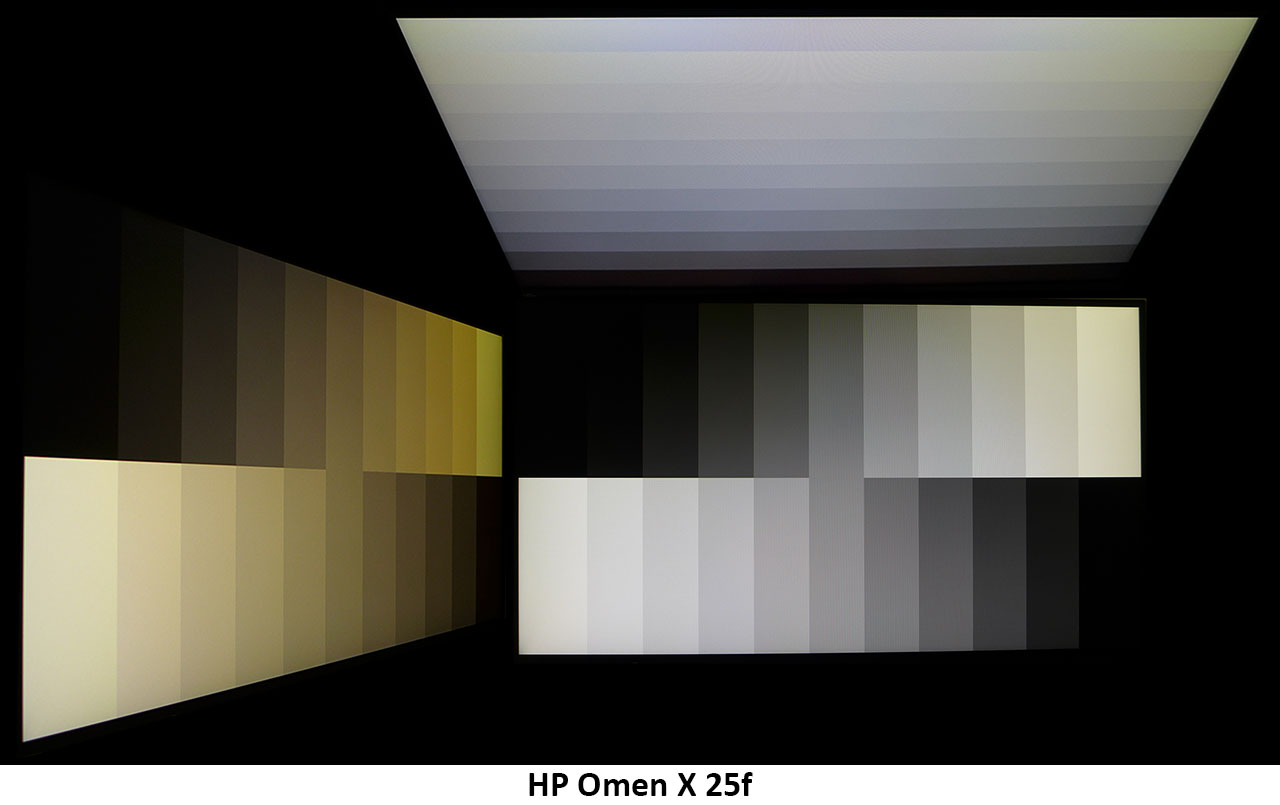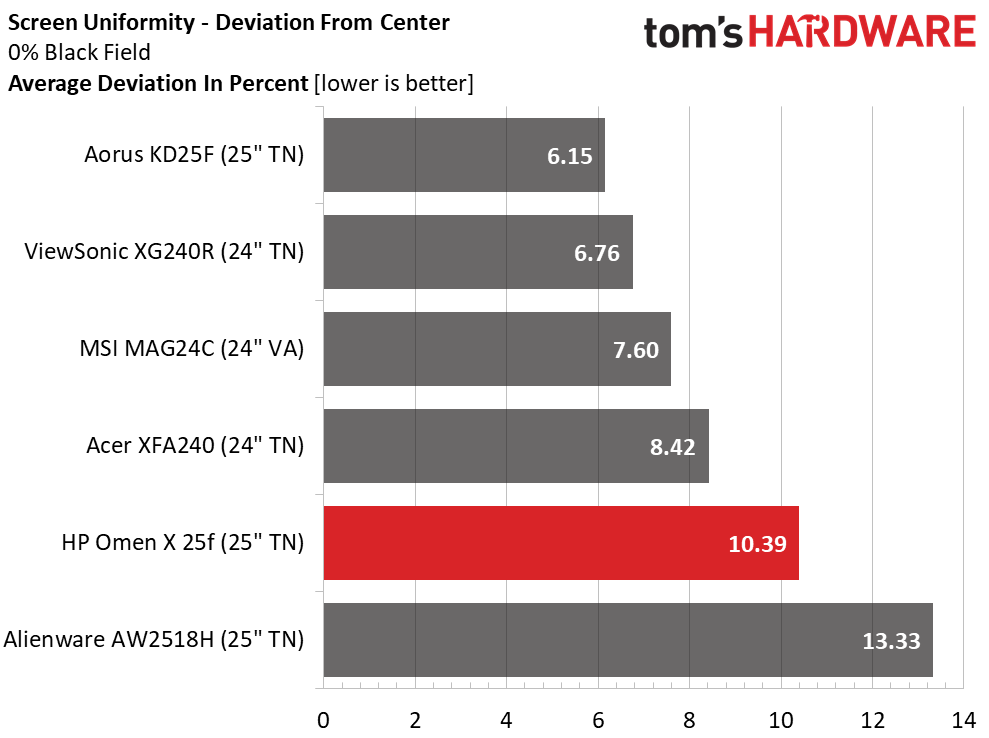HP Omen X 25f 240 Hz Gaming Monitor Review: Speed and Style
Why you can trust Tom's Hardware
Viewing Angles, Uniformity, Response and Lag
Viewing Angles
Poor viewing angles are inherent in TN monitors, and the Omen X 25f is no exception, though it looks better than many such displays we’ve reviewed. The top-down view is quite washed out with a similar light reduction and very little visible detail. The side view shows an obvious shift to green and red with a light reduction of around 30%. The super-bright backlight helps in this regard. At the Omen’s size, however, head-on viewing is not a problem. Detail remains visible in all the brightness steps.
Screen Uniformity
To learn how we measure screen uniformity, click here.
The Omen X 25f’s screen uniformity is quite good, except for a slight hotspot at the center. The surrounding zones are within 3% of one another, and the overall view is very good. There is no bleed or glow anywhere on the screen.
Pixel Response and Input Lag
Click here to read up on our pixel response and input lag testing procedures.


The Omen X 25f manages to equal our panel response champ, the Aorus KD25F. At just 5ms, you won’t see anything resembling blur or judder. You won’t need any ultra-low motion blur (ULMB) with any of these screens. There’s a visible difference between 5ms and the 7ms typical of 144 Hz monitors. Whether it’s a deal-breaker or not is up to the user, but if you pay extra for 240 Hz, you will get a noticeable improvement in performance. Input lag is just 1ms higher than the Aorus, which means it’s lower than every other monitor we’ve reviewed, save the AW2518H. This is the principle appeal of a 240 Hz display: it’s not about ultimate image quality or resolution; it’s about speed, and the Omen X 25f has it.
MORE: Best Gaming Monitors
MORE: How We Test Monitors
Get Tom's Hardware's best news and in-depth reviews, straight to your inbox.
MORE: All Monitor Content
Current page: Viewing Angles, Uniformity, Response and Lag
Prev Page Grayscale, Gamma and Color Next Page Conclusion
Christian Eberle is a Contributing Editor for Tom's Hardware US. He's a veteran reviewer of A/V equipment, specializing in monitors. Christian began his obsession with tech when he built his first PC in 1991, a 286 running DOS 3.0 at a blazing 12MHz. In 2006, he undertook training from the Imaging Science Foundation in video calibration and testing and thus started a passion for precise imaging that persists to this day. He is also a professional musician with a degree from the New England Conservatory as a classical bassoonist which he used to good effect as a performer with the West Point Army Band from 1987 to 2013. He enjoys watching movies and listening to high-end audio in his custom-built home theater and can be seen riding trails near his home on a race-ready ICE VTX recumbent trike. Christian enjoys the endless summer in Florida where he lives with his wife and Chihuahua and plays with orchestras around the state.

